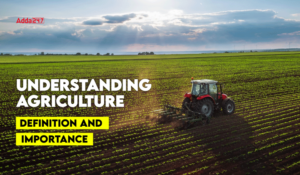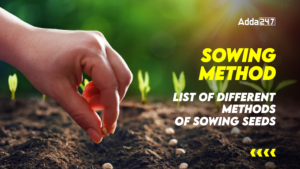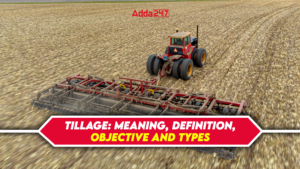Farming requires answering three basic questions: what to do, how much to do, and how. These questions provide guidelines for all agricultural practices followed by farmers. This page gives you information about the types of cultivation, what to do, and a cultivation chart to explain how to do it. Learn about farming types and systems together on this page.
The terms “varieties” and “systems” of agriculture are often confused, as they are known to have different dimensions. Agricultural diversity involves the quality and quantity of production and the methods of production. Agricultural systems are associated with the institutional structure of agriculture. This may include land ownership, pooling of resources, and decision-making power.
Classification of Farming
A. Types of Farming
Natural, economic, and social factors determine the type of farming in an area. Within the constraints of natural factors, economic elements like relative prices, resource availability, transportation, farm size, land values, and technological advancements also play crucial roles. Additionally, cultural beliefs and social backgrounds influence farming practice
- Subsistence Farming: Subsistence farming is characterized by farmers cultivating primarily to sustain their own livelihoods rather than seeking substantial profits. These farmers typically work small landholdings and use rudimentary tools. Yields are modest, with most produce consumed by the family and only a minimal surplus available for sale.
- Intensive and Extensive Farming: Intensive farming focuses on maximizing production within limited land constraints by utilizing all available resources. This method is practiced mainly in densely populated areas and allows for multiple crop cycles each year, requiring significant labor and capital investment. Conversely, extensive farming, or mechanical farming, relies heavily on machinery. It typically involves cultivating a single crop per year and requires less labor and capital per hectare compared to intensive farming.
- Commercial Farming: Commercial farming is the large-scale cultivation of crops primarily for export. Practiced in regions like Punjab, Gujarat, and Maharashtra, this method employs various agricultural techniques, including the use of pesticides and high-yield variety seeds, to achieve significant yields.
- Plantation Farming: Plantation farming involves cultivating large areas with specific crops like tea, rubber, and coffee. This method requires substantial capital investment and effective management skills, with a focus on export-oriented production. Regions such as Karnataka and Kerala are prominent for this type of farming.
- Dryland Farming: Dryland farming is practiced in regions with low rainfall, relying on drought-resistant crops like bajra and jowar. This method focuses on moisture conservation and is prevalent in arid areas of northwestern and central India.
- Wetland Farming: Wetland farming is suited for regions with sufficient rainfall, particularly during the monsoon season. It involves cultivating water-dependent crops like rice and sugarcane, mainly in the northern and northeastern parts of India.
- Mixed Farming: Mixed farming combines the cultivation of multiple crops with livestock rearing. This method allows farmers to grow various crops simultaneously, accommodating different maturation periods and relying on adequate rainfall or irrigation.
- Organic Farming: Organic farming eliminates synthetic fertilizers and pesticides, relying instead on natural methods to maintain soil health. This approach encompasses both animal rearing and plant cultivation, emphasizing sustainability and ecological balance.
- Co-operative Farming: Cooperative farming promotes the collective sharing of resources among farmers, such as tools and inputs, without pooling land. This method enhances resource utilization and encourages community collaboration among farmers.
- Terrace Agriculture: Terrace agriculture involves creating flat plots on hilly terrain by constructing terraces. This method helps prevent soil erosion and allows farming in mountainous regions where flat land is scarce.
- Crop Rotation: Crop rotation is a structured approach where specific crops are planted in a predetermined sequence to maintain soil fertility. This practice helps in sustaining the productivity of the land over time.
- Dairy Farming: Dairy farming focuses on rearing livestock for milk production, with India boasting a significant number of dairy animals. This practice provides a vital source of income for many farmers, with around 40% engaged in milk production, facilitating a shift from subsistence to income generation.
- Ley Farming: Ley farming is employed in arid regions to rejuvenate soil fertility through a planned rotation of food grains and grasses. This technique enhances soil quality and is encouraged as part of organic farming practices, particularly in drylands.
B. Factors Determining the Type of Farming
Farming in India is affected by many different factors that together shape how agriculture works. These factors influence food security, the livelihoods of rural communities, and the country’s overall economic growth. Knowing how these influences work is important for tackling the challenges farmers face and improving agricultural productivity.
Physical Factors
- Climate: India’s diverse climate plays a crucial role in determining crop choices and farming practices across various regions. Different crops thrive under specific temperature and rainfall conditions, which significantly affects agricultural productivity. For instance, rice is predominantly grown in areas with high rainfall, while wheat flourishes in drier climates.
- Topography: The country’s varied landscape, ranging from plains to mountains, influences land availability, irrigation possibilities, and the types of crops grown. Hilly regions may limit the scale of farming, while fertile plains support extensive agricultural activities.
- Soil Fertility: Soil quality varies significantly across regions in India, impacting crop selection. Farmers must adopt different fertilization and soil management techniques to enhance soil fertility, which is crucial for achieving optimal yields.
- Water Availability: Adequate water supply is vital for successful farming. Regions with limited access to water face significant challenges in crop cultivation, often resulting in lower productivity and increased vulnerability to drought.
Economic Factors
- Market Demand: The demand for specific crops and agricultural products influences farmers’ decisions regarding what to cultivate. Higher demand for certain goods can lead to increased income opportunities for farmers.
- Input Costs: The costs associated with seeds, fertilizers, pesticides, machinery, and labor have a direct impact on the profitability and feasibility of various farming practices. Rising input costs can strain farmers’ financial resources and affect their livelihoods.
- Government Policies: Agricultural policies, including subsidies and support programs, play a crucial role in shaping farmers’ livelihoods and decisions. Government initiatives aimed at improving agriculture can significantly boost productivity and income.
- Infrastructure: Access to transportation, storage facilities, and marketplaces is essential for the efficiency of agricultural operations and the distribution of products. Poor infrastructure can hinder farmers’ ability to sell their goods and maximize profits.
Other Factors
- Technology Adoption: The level of technological advancement in farming practices can greatly influence productivity and efficiency. The adoption of modern techniques, such as precision farming and smart irrigation, can lead to improved crop yields.
- Land Tenure System: Land ownership and leasing practices impact farmers’ willingness to invest in agricultural land and engage in long-term planning. Secure land tenure encourages farmers to make improvements and adopt sustainable practices.
- Socio-Cultural Factors: Traditional practices, customs, and social norms can shape agricultural decisions in certain communities. These factors may affect crop choices, farming methods, and the adoption of new technologies.
- Environmental Concerns: Growing awareness of environmental sustainability influences many farmers to adopt eco-friendly practices. This shift towards sustainable farming methods helps in preserving soil health and protecting natural resources.
- Natural Disasters: Events such as droughts, floods, and pest outbreaks can severely impact crop yields and farmer incomes. These unpredictable factors create significant risks for agricultural production, emphasizing the need for resilience in farming systems.
C. Systems of Farming
The term “systems of farming” refers to agricultural methods and land ownership structures.
- Cooperative Farming: Members pool their resources to farm collectively, with decisions made by a common body.
- Cooperative Better Farming: Smallholders form societies for shared services, retaining individual ownership.
- Cooperative Joint Farming: Members pool land and resources, sharing profits based on contributions.
- Cooperative Tenant Farming: Land belongs to the society, while members independently manage operations.
- Cooperative Collective Farming: No individual land rights; all operations are managed collectively.
- Peasant Farming: In this system, individual farmers own and manage their farms. Although they have decision-making power, limited resources pose challenges.
- State Farming: Managed by government entities, state farms are often not financially incentivized, leading to inefficiencies in operation.
- Capitalistic Farming or Estate Farming: These farms are large, owned by wealthy individuals or corporations, and utilize advanced technology and management practices.
- Collective Farming: A system where multiple families pool their resources and manage to farm collectively is common in communist nations but less so in India.
- Contract Farming: The land is leased long-term from individual owners, who receive rent but do not participate in farm management decisions.
D. Factors Affecting the System of Farming
Key factors influencing the choice of farming systems include:
- Size of Land Holdings: Larger holdings may favor individual farming, while smaller plots might necessitate cooperative arrangements for better resource utilization.
- Volume of Business: The extent of business operations influences whether a cooperative or collective approach is more viable.
- Availability and Use of Resources: Access to capital can drive the choice toward capital-intensive farming practices.
- Availing of Facilities: Opportunities such as credit and marketing resources can dictate the farming system adopted by farmers.



 Understanding Agriculture: Definition an...
Understanding Agriculture: Definition an...
 Sowing Method: List of Different Methods...
Sowing Method: List of Different Methods...
 Tillage: Meaning, Definition, Objective ...
Tillage: Meaning, Definition, Objective ...




 Adda247 Job portal has complete information about all Sarkari Jobs and Naukri Alerts, its latest recruitment notifications, from all state and national level jobs and their updates.
Adda247 Job portal has complete information about all Sarkari Jobs and Naukri Alerts, its latest recruitment notifications, from all state and national level jobs and their updates.



